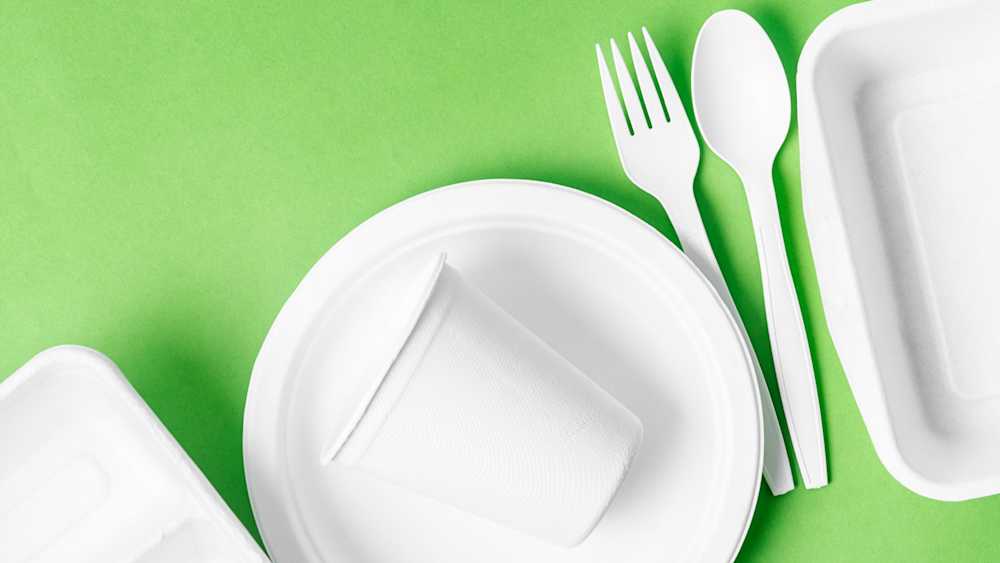Non-intentionally added substances (NIAS) are possibly harmful chemicals that end up in food contact materials (FCMs) without being purposefully added during the production process. These substances may migrate into food and pose a safety risk to consumers.
To mitigate the risks, NIAS testing is needed to detect non-intentionally added substances that are transferred from FCMs into food. Together with other analyses like specific and overall migration testing, comprehensive NIAS screening helps ensure that materials are safe and compliant with all the relevant EU regulations.
How do non-intentionally added substances end up in FCMs?
NIAS are divided into three categories based on how they end up in food contact materials:
Side products are formed during the manufacturing process as a result of chemical reactions between different components of the food contact article. An example would be a coating reacting with the main body of plastic packaging.
Breakdown products end up in the material when its constituents or additives degrade during manufacturing or use. Typically, the vast majority of NIAS in plastic FCMs are degradation products, such as phenol or benzaldehyde compounds from antioxidant breakdown.
Contaminants include impurities in the raw materials and environmental pollutants that end up in the product during different stages of the manufacturing process. Significant amounts of contaminants are often found in FCMs made of recycled materials. Recycled plastics are likely to contain oligomers and additives, while recycled paper and board often contain mineral oils, bisphenols, and phthalates.
What are the EU requirements for NIAS testing?
Regulations (EC) No 1935/2004 and (EU) No 10/2011 obligate manufacturers to ensure the safety of food contact materials, and this includes a thorough risk assessment of NIAS. In practice, however, the nature of non-intentionally added substances may make it difficult to ascertain the exact criteria for risk assessment.
The way that NIAS substances should be dealt with depends on whether or not they are specified in Annex I to Regulation (EU) No 10/2011. If a substance listed in the annex is found during NIAS screening, its specific migration to a food simulant must be assessed similarly to any intentionally added substance. In such cases, the specific migration limit depends on the substance's estimated harmfulness and is usually given in Annex I in milligrams per kilogram of food (mg/kg).
If a non-intentionally added substance is not listed in Annex I to Regulation No 10/2011, its safety should be assessed according to internationally recognized scientific risk assessment principles.1 This means that the safe migration limit should be determined based on sources like the ECHA list of SVHC-substances, EFSAs tolerable daily intake (TDI) value2, or the Cramer classification3 of substances based on their chemical structure.
When the migration of a substance is found to be less than 10 µg/kg in the initial NIAS screening, it is generally considered to be safe, and further analysis is not needed. The only exceptions to this rule are potentially carcinogenic or mutagenic substances, such as primary aromatic amines (PAA) and polycyclic aromatic hydrocarbons (PAH). If there is a considerable risk of these being present in the material, a separate compound-specific analysis should be performed. This is usually the case with FCMs made of recycled materials.
How is NIAS analysis performed?
The first step of NIAS testing is to perform a general screening that identifies different non-intentionally added chemicals without prior information on what could be found. This is usually done using GC-MS analysis, which is an effective way to detect and identify volatile and semi-volatile organic compounds. Oligomers and other non-volatile organic NIAS, which cannot be detected with GC-MS, should be analyzed with LC-MS. For screening of inorganic NIAS, ICP-MS is typically used.
In the initial NIAS screening, the threshold is 10 µg/kg – if a higher presence of any substance is detected, it should be identified and its safety threshold determined. As GC-MS is a semi-quantitative analysis, a separate specific migration test should be performed with a substance-specific method (such as LC-MS) to determine the level of migration more accurately. This subsequent test will also help determine the reliability of initial substance identification through GC-MS.
If there is reason to assume that substances with a safety threshold below 10 µg/kg migrate from the food contact material, additional compound-specific testing is needed to ensure that their levels are within safe limits.
NIAS in traditional plastics vs. recycled plastics
Traditional plastics often pass NIAS screening with none to a few substances of concern identified. When food contact materials are made of recycled plastics, the efficiency of the cleaning process influences the likelihood of NIAS being found. As the risks are higher, toxicological screening for recycled materials should be performed more frequently in comparison to virgin materials (e.g. once a year as opposed to every 2-4 years).
With the new Regulation (EU) 2022/1616, the European Commission is encouraging the use of recycled plastics in the production of food contact materials. As such, there is no reason to avoid using them, as long as the higher likelihood of breakdown product and contaminant presence is taken into account during the testing process.
If you require a NIAS assessment or any other food contact material testing services, do not hesitate to contact our experts through the form below. We reply to all queries within one business day.
Notes
1 This requirement is laid out in Regulation (EU) 10/2011, Article 19
2 EFSA does not have a list of substances of concern. Still, its prior evaluations on the risks posed by specific substances may be used to determine the appropriate migration limits for these or structurally very similar compounds.
3 In the Cramer classification system, substances are divided into three classes according to the toxicological concern they are likely to pose based on their structure. The migration limits are as follows:
1800 μg/kg for Class I
540 μg/kg for Class II
90 μg/kg for Class III
In addition, a limit of 18 µg/kg applies to organophosphates and carbamates.

